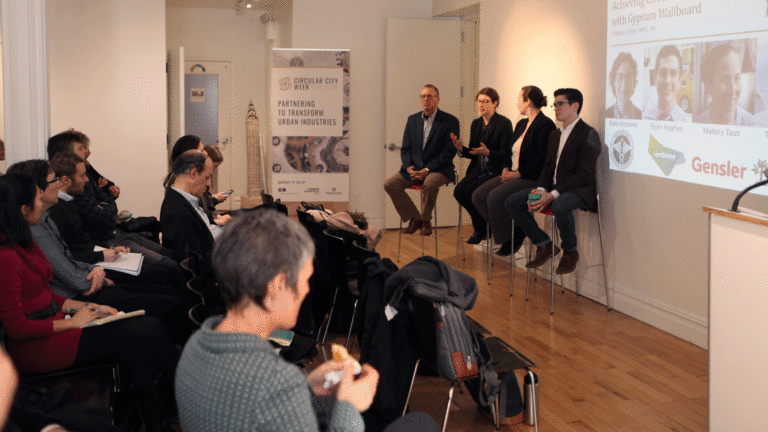Most building materials are made from virgin resources, and when a building is refurbished or demolished, they end up being downcycled, incinerated, or landfilled. The negative impacts of this linear “take-make-waste” resource flow are vast, and the construction industry is starting to experience resource scarcity. In contrast, the circular economy aims to design waste and pollution out of the system, keeping products and materials in use for as long as possible to regenerate natural systems.
Learn how architects can support a circular economy of building materials, far beyond effective construction and demolition waste management plans. Find out the benefits of considering buildings as material banks, how material passports fit into this concept, and what it means for a BIM model. Learn how healthy material and low embodied carbon considerations relate to circularity and how they are supported by local policies. Hear about successful case studies of projects incorporating salvaged materials and successful deconstruction in practice.
This panel is the second in a series on Zero Waste Design for the San Francisco Bay Area to discuss how architects can build circular, from current best practices to what needs to happen to reach a truly circular future.
Moderator:
Clare Miflin, Founder, Center for Zero Waste Design; Co-chair, AIANY Committee on the Environment
Panelists:
Marcus Hopper, Northwest Regional Design Management leader, Gensler
Frances Yang, Leader of Americas Sustainable Materials Consulting Practice, Arup
Amanda Kaminsky, Founder, Building Product Ecosystems
Eden Brukman, Senior Green Building Coordinator, San Francisco Department of the Environment
James Slattery, Construction and Demolition Debris Recovery Specialist, San Francisco’s Department of the Environment



